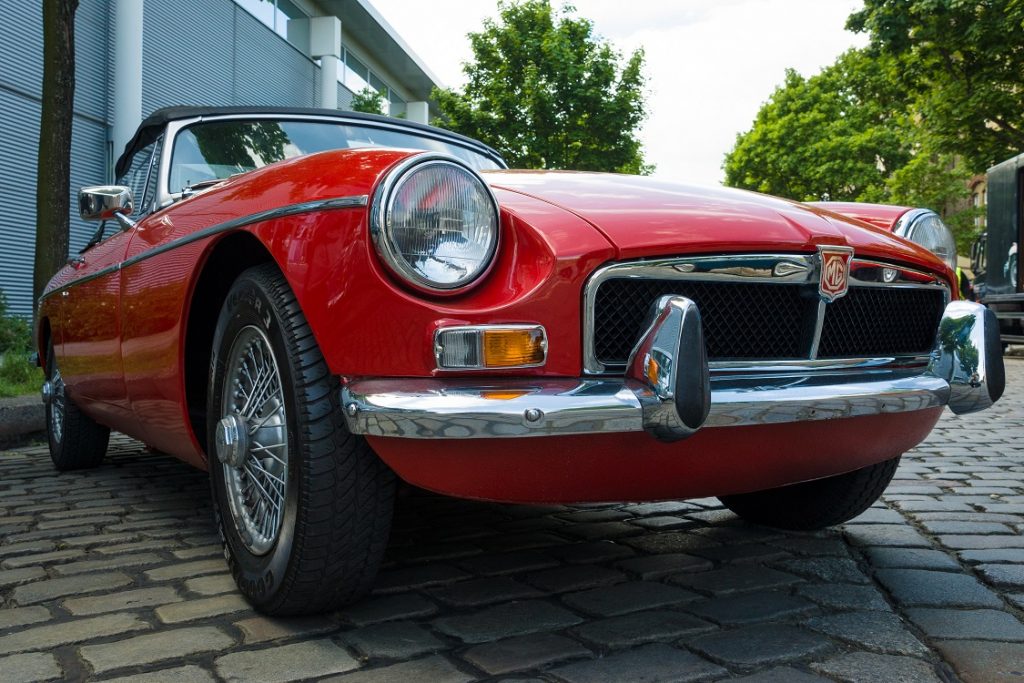Roadsters and convertibles are becoming muddied with electronics, driver assist technologies, and generally suffer things that make the open-air experience of zipping around country corners feel disconnected. That’s not the case with Britains little MGB, a primordial little two-seater convertible and coupe built by the British Motor Corporation, and later British Leyland. Introduced in 1962, the MGB was simple in the best way. It provided fun that made one feel connected with the car. The MGB’s magic formula helped it garner over 523,000 total sales.

The MGB was offered as a four-cylinder, six-cylinder, and eventually eight-cylinder car. It did nothing to reinvent the everyman’s track car in the way of performance and configuration, using a tried and true front-engine, rear-wheel layout.
A Supercar Body on a Budget
The MGB did innovate with its body’s fabrication, using a unique monocoque (that’s “single-shell” to you and us) design, eschewing the conventional body-on-frame methods found in the rival Triumph TR. A monocoque body is essentially a single hull that gets its strength by distributing tension and compression across its surface.
In this design, there is no load-carrying internal frame. The major benefits of this design include weight savings and interior space – both of which the MGB boasted, including plenty of legroom. This design can be found today on the classic McLaren F1. Although much less safe than modern cars, the MGB included controlled crumple zones that reduced impact forces and helped to reduce the risk of injury during a collision.

The MGB provided plenty of legroom thanks to its single-shell, frameless body
Poor Numbers, Great Road Feel
The MGB’s powerplant and drivetrain were nothing to shake a stick at when looking at numbers. The original model’s BMC B-Series motor produced just 95 horses and 110 torques, going from 0 to 60 in 11 seconds. But numbers mattered not with the MGB. Even with paltry acceleration, the MGB still felt responsive and composed, taking corners and cramming into apexes with ease.
With a curb weight of just 2,590, the MGB’s monocoque body exhibited little roll or slop, giving the driver’s spirit to a car that was affordable and practical. The B-series engine‘s pushrod configuration saved weight and kept a low center of gravity, further improving the felt driving experience. The B-Series motor was incredibly reliable, too. A one-piece crankcase and cast iron block housed a three- and eventually five-bearing crankshaft.

The MGB GT-V8 was a short-lived but fantastic 3.5L coupe
Short-Lived British Muscle
The GT-V8 was an unsung hero of the MGB world. This brilliantly powered coupe was produced by British Leyland, the company that took over MGB production from British Motor Corporation. Leyland got a bad rap for making terrible cars, but the GT-V8 was a gem. Although short-lived, the GT-V8s produced between 1973 and 1976 were instant hits. The car sported a 3.5L alloy motor from Buick that actually weighed 40 pounds less than the B-Series motor. It boasted a 75% increase in torque, getting the MGB from null to 60 in 8.6 seconds.
Certainly a dramatic improvement over the 11-second cars of years prior. The GT-V8 also boasted a second row of seats in a 2+2 configuration. A fastback decklid made the GT-V8 less of a pencil neck auto and more of a proper “muscle car” by American standards.
Unfortunately, the Triumph TR7 and Stag edged out the GT-V8, and British Leyland killed the MGB, just a few short years after its zippy little coupe was rolled out of the factory. Only 2,591 cars were built, making them rarities in the MGB world.
